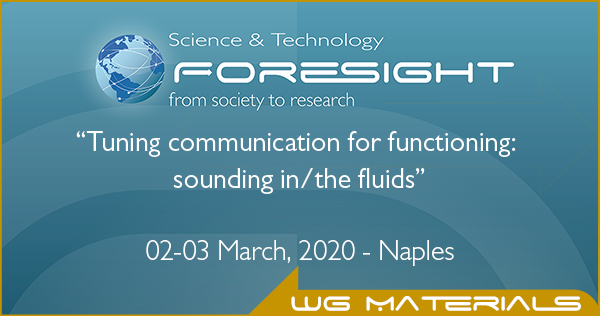STEM MATERIALS
MISSION
In nature, living organisms consist of a limited number of primary components and chemical bonds, organized in complex systems capable to adapt to diversified environmental conditions. Materials are very rarely adaptable, and often require a large number of components to achieve high performances in specific functions. A comparison between organisms and materials shows that even the approach to their respective life-cycles is largely different, the first renewing themselves in a continuous interaction with the environment, the latter mainly preserving from alterations.
Indeed, materials able to perform different functions and to respond to external inputs will become increasingly important. They will play a fundamental role in the additive production to the extent that they are designed and structured to perform and adapt, without any additional device. Reversing the current manufacturing processes, introducing materials able to perform as sensors and actuators, according to external environmental conditions for fulfilling different requirements, is still a challenge. These intelligent materials should be adaptable in any context and condition, and possibly consist of primitive units, containing the minimal and sufficient number of components to perform a basic function. Their combinations can respond to specific requests of multi-functionality and adaptability.
The group aims at identifying the main research gaps and setting priorities towards the development of a breakthrough in this field.
MAIN OUTCOMES
The natural evolution has already selected a machine for building materials, capable to adapt to environmental conditions with widespread functional capacity: the organic cell.
Chemical synthetic biology, as the artificial design and engineering of new “quasi-biological” materials, is providing unprecedented outcomes, but the identification and a general description of simple and “minimal cells/units”, providing the union between the informational genome and the three dimensional structure in which it resides, are still lacking.
Recent results in quantum simulations and material science have already allowed to design and to produce new ad-hoc materials, paving the way towards the identification of a “material code”. Greater computational capabilities could allow more accurate descriptions of the complex systems, which may provide clues in identifying a paradigm for primitive units and their combinations.
While experiments and analogies seem to drive the advances in this research, the group will address different options to achieve 1) a general and breakthrough mathematical framework for primitive units, as a sort of ribosome of Materials, and their combinations and/or 2) an accurate and flexible empirical framework to satisfy any request for functionality and performance of materials.
In this regard, central (leading/major…) aspects have been selected in order to identify the main research gaps which should be filled towards the “Stem materials”.
STEM materials: a new frontier for an intelligent sustainable world
WG COORDINATORS:
Pier Francesco Moretti
E-Mail: pierfrancesco.moretti@cnr.it
WG MATERIALS EVENTS

Tuning communication for functioning: sounding in/the fluids02-03 March, 2020 - Naples, Italy |

Step towards Stem Materials25-26 June, 2019 - Brussels |

Stem Materials: clues and path identification12-13-14 December, 2018 - Rome, Italy |

Scoping Workshop on Stem MaterialScience and Technology Foresight Project of the National Research Council of Italy 23-24 March, 2017- Rome, Italy |


